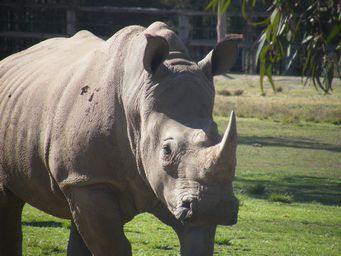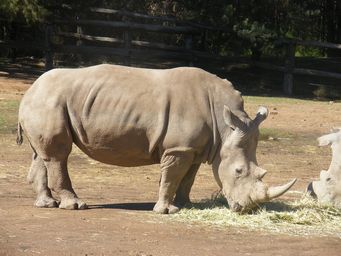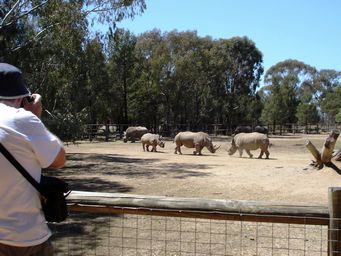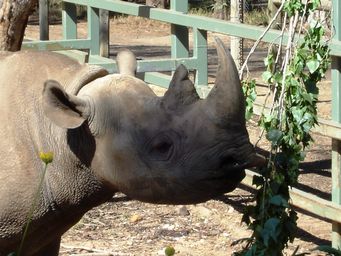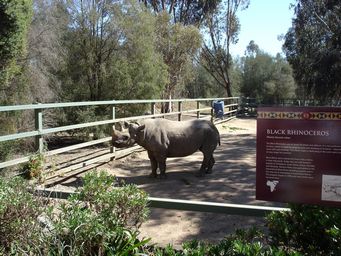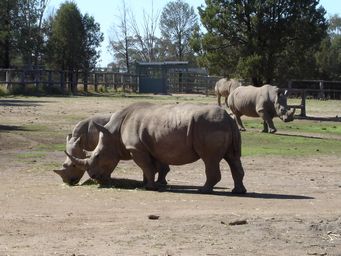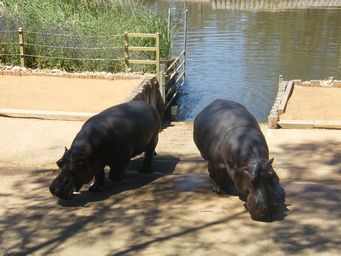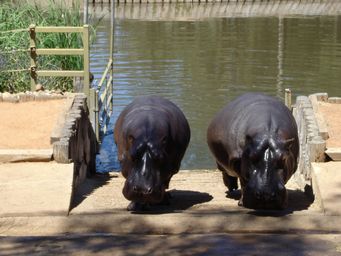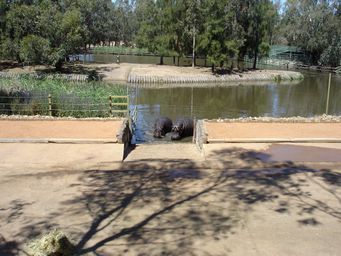Australia So Much to See
Black Rhinoceros use their horns for attack and defence. They are territorial, and mark their territory by spraying urine, and
depositing then stamping on their faeces thus depositing a scent with each step.
They are principally browsers, and their
pointed lip enables them to fed on leaves. They are also known as Hook-lipped Rhinoceros.
Populations in Africa
are reduced to a few pockets. Taronga Western Plain Zoo is the only zoo in Australia to successfully breed Black Rhinoceros.
White Rhinoceros are not white in colour. Their name comes from their wide upper lip, which is weit in Africaans, meaning wide,
referring to the animal’s wide mouth. They are principally grazing animals. They are also known as Square-lipped Rhinoceros.
Unlike the solitary Black Rhinoceros, White Rhinoceros form complex families of females and calves. Males, averaging 2.3 tonnes,
duel with their horns for mating rights over the females in the group.
In 1893, the White Rhinoceros was thought
to be extinct due to poaching and loss of habitat. A small group was found, and an international conservation programme is trying
to save these giants.
Adults males average 1.5 tonnes and females 1.3 tonnes. Despite their stocky shape and short legs, Hippopotamuses are capable
of running 30 kilometres per hour over short distances.
Hippos spend up to 16 hours a day submerged in rivers and lakes to keep their massive bodies cool under the hot African sun. Reproduction and childbirth both occur in water.
They emerge at dusk to graze on grasses. While hippos rest near each
other in the water, grazing is a solitary activity and hippos are not territorial on land. The hippo is among the most dangerous animals
in the world as it is highly aggressive and unpredictable.
Hippopotamuses come out of the water for their hay at feeding time.
Resources
Signage at sites
What animals can you see at Taronga Dubbo Zoo? This updated link is not a complete list of all the animals we saw.
You can get hands on and feed the Giraffes carrots for a $5 fee. Here a young child (with hat only visible) is delighted to
feed these tall and beautiful animals.
Asian Elephants are fed on coconut palm stalk
The giraffe has an extremely elongated neck, which can be up to two to 2.4 metres in length. The long neck results from a disproportionate
lengthening of the cervical vertebrae, not from the addition of more vertebrae. Each of the seven cervical vertebra is over 28 centimetres
long.
Their legs are about 1.8 metres tall, with back and front legs being much the same size.
Fully grown
giraffes stand 4.3 to 5.7 metres tall, with males taller than females.
Both sexes have prominent horn-like structures called
ossicones, which are formed from ossified cartilage, covered in skin and fused to the skull at the parietal bones.
Western Plains Dubbo Zoo, New South Wales
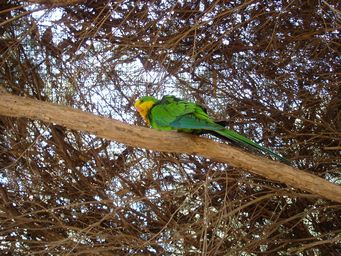
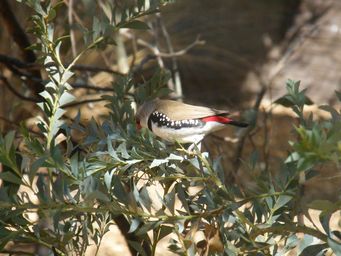
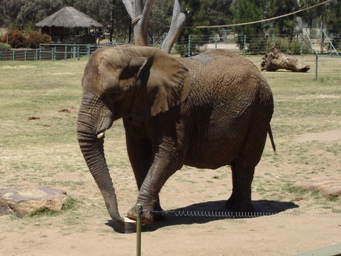
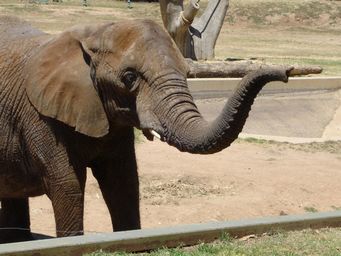
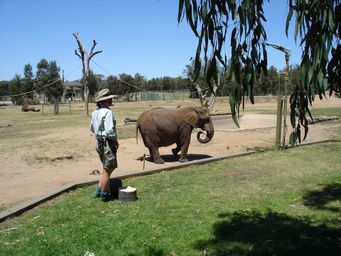
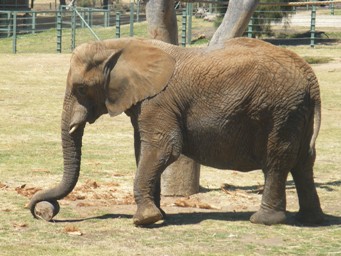
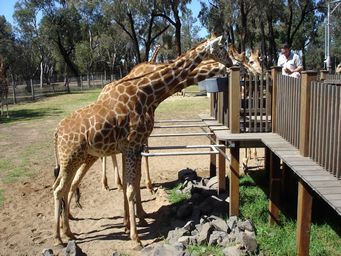
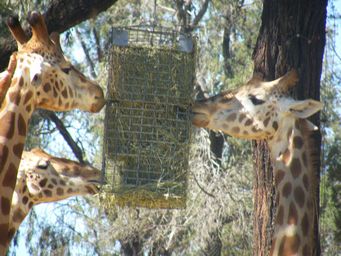
Asian Elephants grow to weights of two to five tonne, and males can be up three metres tall at the shoulder. They are smaller
than African elephants and one distinctive difference their smaller rounded ears.
The species is endangered
in their native habitats, and some sub species have already become extinct.
